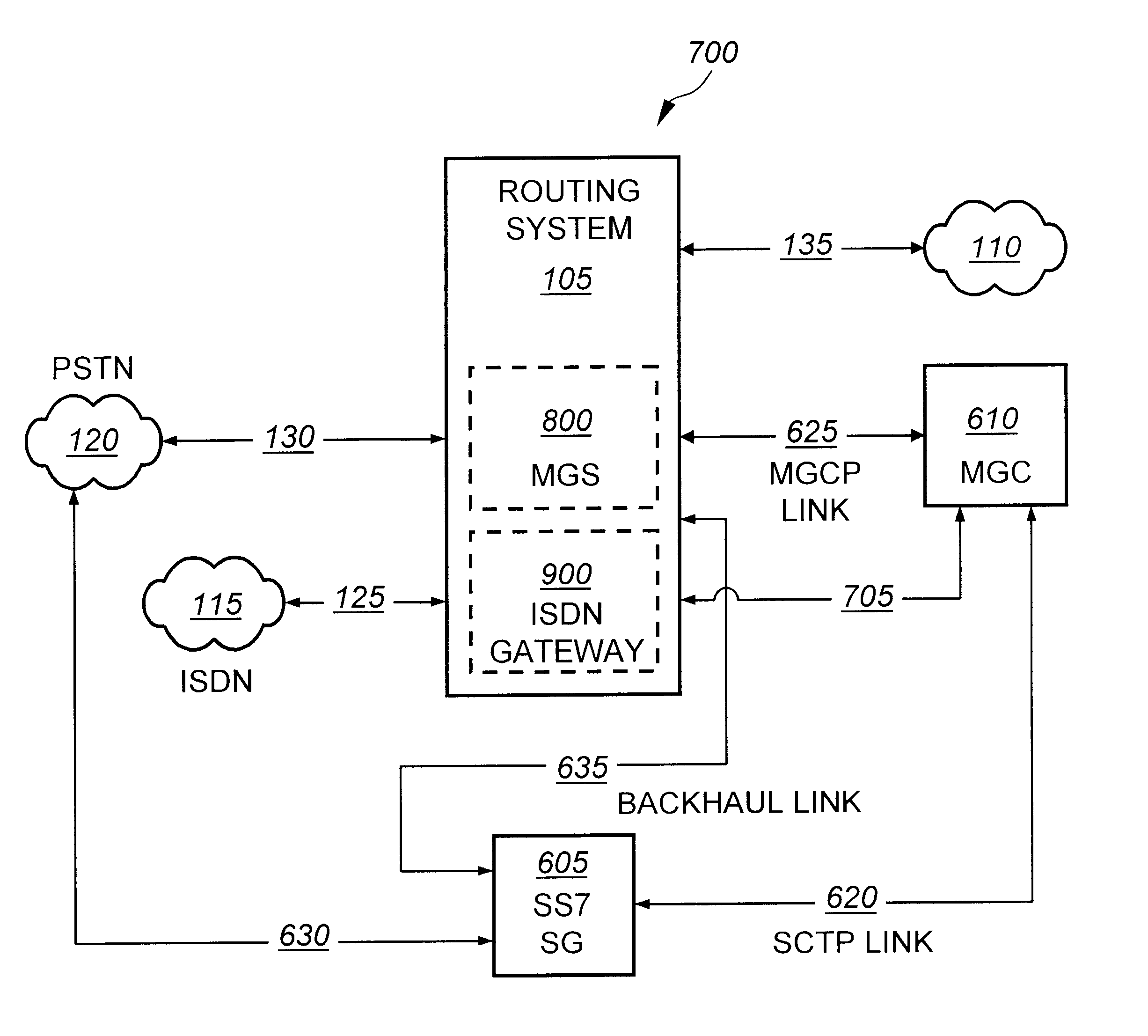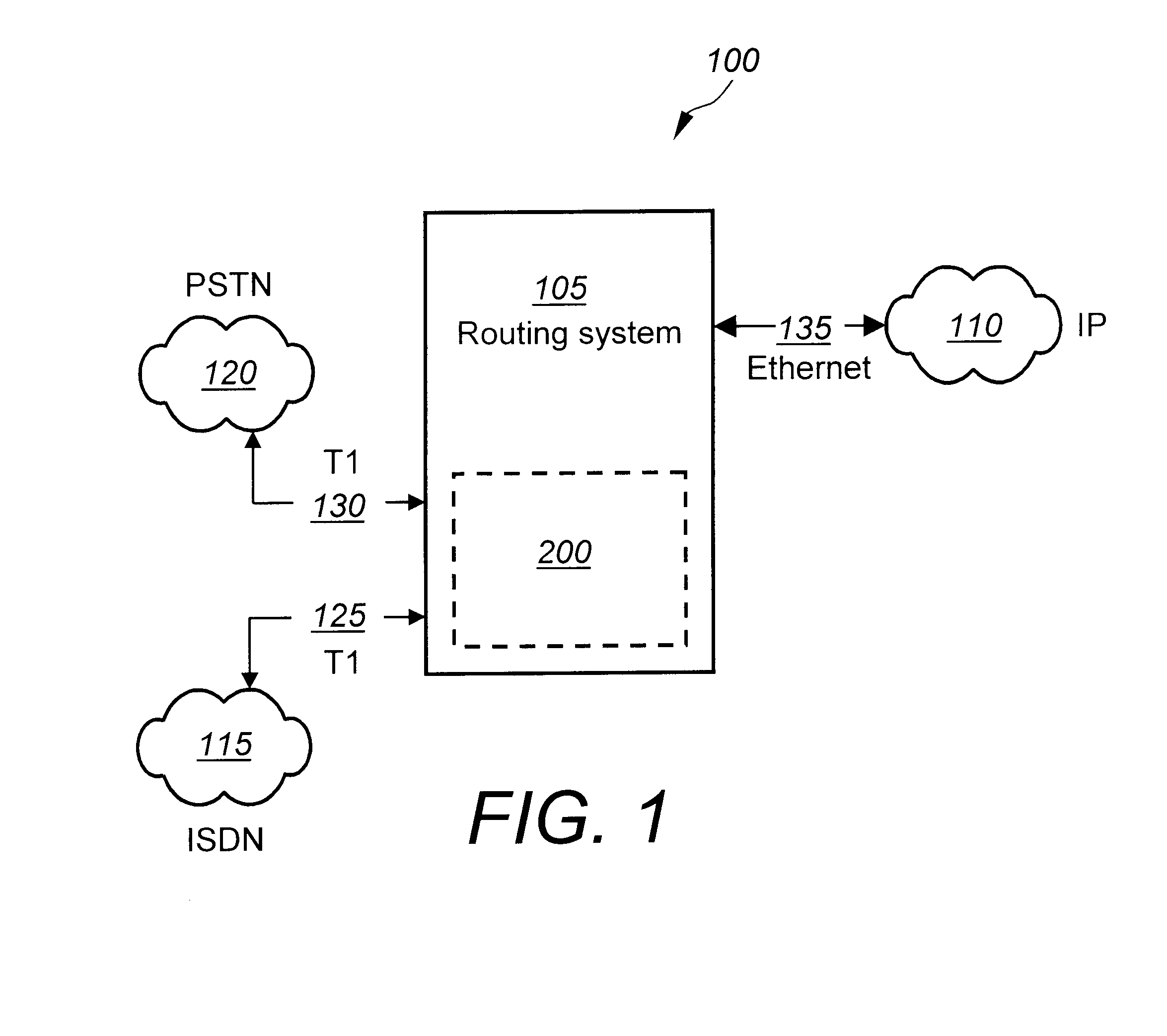System for and method of channel associated signaling backhaul in a routing system
a routing system and channel technology, applied in data switching networks, time-division multiplexing selection, multiplex communication, etc., can solve the problems of the cost of such systems cannot be amortized over long periods of time, and the inability to provide isdn signaling
- Summary
- Abstract
- Description
- Claims
- Application Information
AI Technical Summary
Benefits of technology
Problems solved by technology
Method used
Image
Examples
Embodiment Construction
The invention provides a system and method of performing channel associated signaling (CAS) backhaul of non-ISDN formatted signals in an ONG routing system. The invention advantageously reduces the complexity of a routing system and provides a way to easily scale the configuration of routing systems. Moreover, the invention provides a means for supplying an ONG system to networks that do not have dedicated SS7 signaling. The invention flexibly provides the user with the ability to use any number of signaling protocols, i.e., R2, Robbed-bit, T1, and P7, and also permits the use of legacy signaling in an ONG model.
4.1 Overview of Routing System Application
FIG. 1 shows an overview of a routing system application 100, including a routing system 105, a first T1 line 125, a second T1 line 130, an Ethernet link 135, an Integrated Services Digital Network (ISDN) 115 network interface, a Public Switched Telephone Network (PSTN) 120 network interface, and an Internet Protocol (IP) 110 network...
PUM
 Login to View More
Login to View More Abstract
Description
Claims
Application Information
 Login to View More
Login to View More - R&D
- Intellectual Property
- Life Sciences
- Materials
- Tech Scout
- Unparalleled Data Quality
- Higher Quality Content
- 60% Fewer Hallucinations
Browse by: Latest US Patents, China's latest patents, Technical Efficacy Thesaurus, Application Domain, Technology Topic, Popular Technical Reports.
© 2025 PatSnap. All rights reserved.Legal|Privacy policy|Modern Slavery Act Transparency Statement|Sitemap|About US| Contact US: help@patsnap.com



